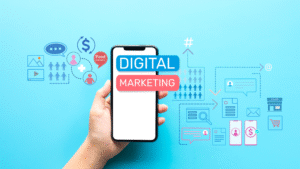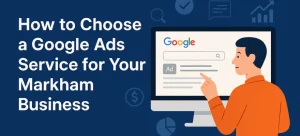We’ve all seen those glowing reviews on Instagram or that video testimonial on a product page. That’s user-generated content, or UGC. It’s basically content your customers create about your product or service, and it’s one of the most underrated tools in digital marketing and advertising.
With people trusting other people way more than traditional ads, tapping into authentic voices can do way more for brand credibility than a polished commercial ever could. User-generated content builds trust by showing real people using your products. Whether it’s text-based content, a customer video, or social media content, it’s all valuable.
Key Takeaways
- UGC is a must-have tool in your marketing strategy
- It’s raw, authentic, and helps brands feel more human
- You can mix in visuals, blog stories, and even influencer shoutouts
- Combine UGC with other marketing strategies to create content that converts
Why User-Generated Content Is a Powerful Tool for Building Brand Trust

People trust people. It’s that simple.
When customers post about your brand on social media or drop a quick testimonial, they’re doing more than just showing love. They’re giving you social proof. And social proof is gold when you’re trying to build trust and credibility online.
Let’s break it down:
- Social media posts feel more personal than ads
- Content from real users has higher engagement than branded content
- Consumer feedback improves your reputation, search engine optimization, and helps build brand trust
Whether it’s a happy customer sharing a photo of your product or service or someone posting a shout-out on Facebook, UGC brings a sense of realness people crave. It shows authenticity and trust.
Types of User-Generated Content That Help Build Brand Trust
Some types of UGC just hit harder. These are our top picks. Each type of UGC helps build trust and engagement in its own way and strengthens your marketing strategy.
1. Reviews and Testimonials
They’re simple, direct, and incredibly effective. Add them to content on your website, emails, or any marketing materials. Great for boosting brand loyalty and winning over new consumers.
2. Social Media Mentions and Tags
If people tag you in stories or posts, reshare that. It’s easy social proof and helps extend your reach on platforms like Instagram and Facebook.
3. Visual Content
Photos and videos from customers using your stuff? That’s prime content. Whether it’s shot on a phone or a camera, or even a GoPro, it’s high-impact ugc content.
4. Blog Posts or Case Studies
Longer-form content created by customers or influencers. A perfect mix of storytelling and media (communication). Ideal for content marketing and building long-term credibility.
5. Customer Stories
Real stories. Real experiences. These reflect a strong customer experience, build community, and boost loyalty.
How to Use UGC to Build Trust and Engagement With Your Audience

UGC isn’t just for show. Here’s how we actually leverage user-generated content to build real connections.
Use UGC across your marketing channels:
- Add it to your website for instant social proof
- Use it in email campaigns to increase open rates
- Post it on your social media platforms to keep things fresh and real
- Blend it with influencer marketing to enhance reach
Feature it in paid ads
UGC-based ads outperform most traditional creatives. They’re relatable, cost-effective, and people are more likely to trust them.
Turn fans into advocates
Ask your customers to share their experiences. Offer an incentive. Run a contest. Use a hashtag. Encourage customers to share content related to your brand.
Use UGC in your digital marketing strategy to:
- Humanize your brand
- Build a loyal community
- Create touchpoints that feel real
- Reach your target audience more effectively
- Support your e-commerce growth with better online shopping experiences
Leveraging UGC to Build Brand Authority
Let’s talk long-term. Here’s how to leverage UGC to stand out in your niche:
- Align the content with your brand values
- Use stories that boost your credibility and show your best customer experience
- Add UGC to your marketing campaigns and match it with solid copywriting
- Make it part of your brand voice, showing your audience how others engage with your product or service
How to Launch a UGC Campaign That Builds Trust

Launching a UGC campaign doesn’t have to be complicated. Use this playbook:
1. Pick the right platform
Think Instagram for visuals, Facebook for community, or TikTok for Gen Z. Choose a ugc platform that fits your goals.
2. Make it easy
Give prompts. Start a challenge. Encourage people to create and share content. Keep the bar low for entry.
3. Offer incentives
Discount codes, contest prizes, or just a feature on your page. Use marketing and social media to promote it.
4. Respect privacy
Ask before you share. Be transparent. It builds trust and covers you on things like HTTP cookie usage and permissions.
5. Curate your content
Select the best. Share what aligns with your values. Show only the strongest examples of UGC.
Great Examples of User-Generated Content That Built Brand Trust
GoPro
Their brand thrives on user-submitted adventure content. They’ve made their customers the stars of their video storytelling.
Coca-Cola’s Share a Coke
Turned a simple product into a personal content creation moment. It encouraged people to make it theirs and share it with others.
Local Businesses
From cafés to online shops, small brands use UGC every day to stay visible, build reputation through authentic customer interactions, and connect with their local and digital community.
Measuring the Impact of UGC on Trust and Engagement
Measure smart. Track these:
- Engagement on user-generated posts and shares
- Increases in traffic or purchases on your e-commerce site
- Participation in UGC campaigns or contests
- Brand mentions across social media marketing channels
Use data to inform what works and optimize your approach.
FAQ About Using UGC to Build Trust
Is UGC good for every business?
Yes. From e-commerce to local services, UGC is a win.
How do we get people to create content?
Run a campaign, use a hashtag, offer an incentive. Most of all, make it fun.
Do we need to ask before sharing?
Yes. Always respect the content creators.
Are there things to keep in mind when using UGC?
Yes. Get permission before sharing, credit creators, and ensure the content reflects your brand. A few simple guidelines go a long way.
How often should we update or refresh our UGC strategy?
Every few months is a good rhythm. UGC trends evolve fast, and refreshing your approach helps you stay relevant and aligned with your audience’s behaviour.
Conclusion
So how do you build trust online? Use user-generated content.
It’s raw, it’s relatable, and people trust it more than polished promos. If your goal is to connect with your target audience and drive long-term brand loyalty, UGC needs to be in the mix.
Discover how user-generated content brings your brand to life in the most human way possible.
Because trust isn’t built with noise. It’s built with voices that matter.
Want help turning your customers into content creators? Reach out to our team today and let’s build trust around your brand with a UGC strategy that works.




